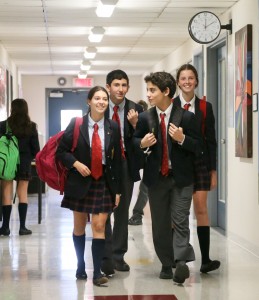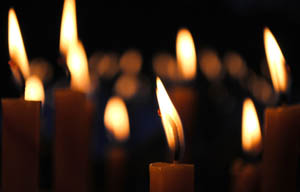I saw something special in his eyes yesterday… something that was not there before. In a word, I would call it resolve… a kind of confidence by American President Barack Obama to be a little grittier, a little edgier, perhaps a little wiser in the next four years. President Barack Obama has now officially begun his second term in office and analysts are already debating what we might see from Obama 2.0. On the heels of reading the public opinion tea leaves, I believe Obama will show resolve on gun control—and carry his election mandate for health care, education, the environment and support to the middle class confidently into the messiness of the American political policy arena.
The official inauguration actually took place in the “Blue Room” of the White House on Sunday —January 20th as outlined by law. Yesterday was a repeat of the oath to office that has been uttered by all presidents, but more symbolic and ceremonial… outdoors in Washington on Capital Hill, looking out over what’s called the “Mall” leading down past a host of monuments, museums and statues to the Lincoln Memorial. Close to a million people are estimated to have attended yesterday’s ceremony. Events began on Saturday with a National Day of Service, including service by the president and his family at a renovation of a local elementary school.
Obama is the 44th American president and the 20th two-term president. Interestingly, Obama actually won more votes in his second term than any president in the past 50 years. The first since Eisenhower in 1956 to earn at least 51% of voter support in both elections.
A US president’s second term can be challenging, as by law Obama cannot continue beyond this term and politicking will begin in earnest in three years, so he has a short window to affect notable change.
Some critics question the importance of the pomp and circumstance of inauguration days. Yes, I agree it can go overboard, but I believe that the symbolism and the ceremony are actually important. The Americans do this part very well. But it is also a public display of the peaceful transition of political power: orderly, celebratory—even in the face of great complexity with so many important issues at stake.
In terms of symbolism, note that yesterday’s ceremony occurred 150 years after the emancipation proclamation that freed American slaves and yesterday was also Martin Luther King Day—an American civic holiday—exactly 50 years since the famous civil rights march on Washington under the leadership of Dr. Martin Luther King. Both of those iconic American leaders have been very influential in President Obama’s life and thinking. For that reason Obama used three bibles for the swearing of the oath of office—the Obama family bible, Lincoln’s bible and Martin Luther King’s Bible— reinforcing Obama’s modern vision and hope for a nation where freedom and equity of opportunity reign. Also note that Abraham Lincoln (also from Illinois – as is Obama) was a two-term president. During his first inauguration the Capital Dome was unfinished due to the strife of the Civil War between the north & south. Lincoln decided to finish it in the middle of the Civil War – completing it in 1863 as a symbol of the strength of the American Union in difficult times.
There are many unfinished jobs in America, and much of Obama’s speech yesterday stressed the need for belief in possibility, innovation and faith in America’s future. Obama stressed Americans to seize the moment and asked all citizens to define hopes of this generation and capacity for more equality in America and less economic inequality.
Obama chose as Inaugural Poet Laureate Richard Blanco: a gay Cuban immigrant. Obama asked him to write three poems and Obama chose one entitled “One Day.”
Blanco says being named poet laureate for the inauguration personally validated and stitched together several ideals against which he long measured America… the essence of the American dream: how a little Cuban-American kid on the margins of mainstream America could grow up with confidence, have the opportunity to become an engineer thanks to the hard work of his parents who could barely speak English, and then go on, choosing to become a poet who was asked to speak to, for and about the entire nation.
I know you all read poetry in your English classes. So in honour of the power of words, I would like to share Blanco’s inspired poem to his fellow citizens and the world:
—Chris Shannon, Headmaster
_______________________________________________________________________________
One Today
One sun rose on us today, kindled over our shores,
peeking over the Smokies, greeting the faces
of the Great Lakes, spreading a simple truth
across the Great Plains, then charging across the Rockies.
One light, waking up rooftops, under each one, a story
told by our silent gestures moving behind windows.
My face, your face, millions of faces in morning’s mirrors,
each one yawning to life, crescendoing into our day:
pencil-yellow school buses, the rhythm of traffic lights,
fruit stands: apples, limes, and oranges arrayed like rainbows
begging our praise. Silver trucks heavy with oil or paper — bricks or milk, teeming over highways alongside us,
on our way to clean tables, read ledgers, or save lives — to teach geometry, or ring up groceries as my mother did
for twenty years, so I could write this poem.
All of us as vital as the one light we move through,
the same light on blackboards with lessons for the day:
equations to solve, history to question, or atoms imagined,
the “I have a dream” we keep dreaming,
or the impossible vocabulary of sorrow that won’t explain
the empty desks of twenty children marked absent
today, and forever. Many prayers, but one light
breathing color into stained glass windows,
life into the faces of bronze statues, warmth
onto the steps of our museums and park benches
as mothers watch children slide into the day.
One ground. Our ground, rooting us to every stalk
of corn, every head of wheat sown by sweat
and hands, hands gleaning coal or planting windmills
in deserts and hilltops that keep us warm, hands
digging trenches, routing pipes and cables, hands
as worn as my father’s cutting sugarcane
so my brother and I could have books and shoes.
The dust of farms and deserts, cities and plains
mingled by one wind — our breath. Breathe. Hear it
through the day’s gorgeous din of honking cabs,
buses launching down avenues, the symphony
of footsteps, guitars, and screeching subways,
the unexpected song bird on your clothes line.
Hear: squeaky playground swings, trains whistling,
or whispers across cafe tables, Hear: the doors we open
for each other all day, saying: hello, shalom,
buon giorno, howdy, namaste, or buenos días
in the language my mother taught me — in every language
spoken into one wind carrying our lives
without prejudice, as these words break from my lips.
One sky: since the Appalachians and Sierras claimed
their majesty, and the Mississippi and Colorado worked
their way to the sea. Thank the work of our hands:
weaving steel into bridges, finishing one more report
for the boss on time, stitching another wound
or uniform, the first brush stroke on a portrait,
or the last floor on the Freedom Tower jutting into a sky that yields to our resilience.
One sky, toward which we sometimes lift our eyes
tired from work: some days guessing at the weather
of our lives, some days giving thanks for a love
that loves you back, sometimes praising a mother
who knew how to give, or forgiving a father
who couldn’t give what you wanted.
We head home: through the gloss of rain or weight
of snow, or the plum blush of dusk, but always — home,
always under one sky, our sky. And always one moon
like a silent drum tapping on every rooftop
and every window, of one country — all of us –
facing the stars
hope — a new constellation
waiting for us to map it,
waiting for us to name it – together.
 So what is the coed advantage? It’s everywhere at LCC, but it was certainly on display this morning at our Middle and Senior School assembly. A group of girls and boys collaborated to lead several presentations on the sensitive topic of feminism and gender issues. It was exactly the kind of activity that underscores the benefits of having girls and boys together in a constructive learning environment.
So what is the coed advantage? It’s everywhere at LCC, but it was certainly on display this morning at our Middle and Senior School assembly. A group of girls and boys collaborated to lead several presentations on the sensitive topic of feminism and gender issues. It was exactly the kind of activity that underscores the benefits of having girls and boys together in a constructive learning environment.

